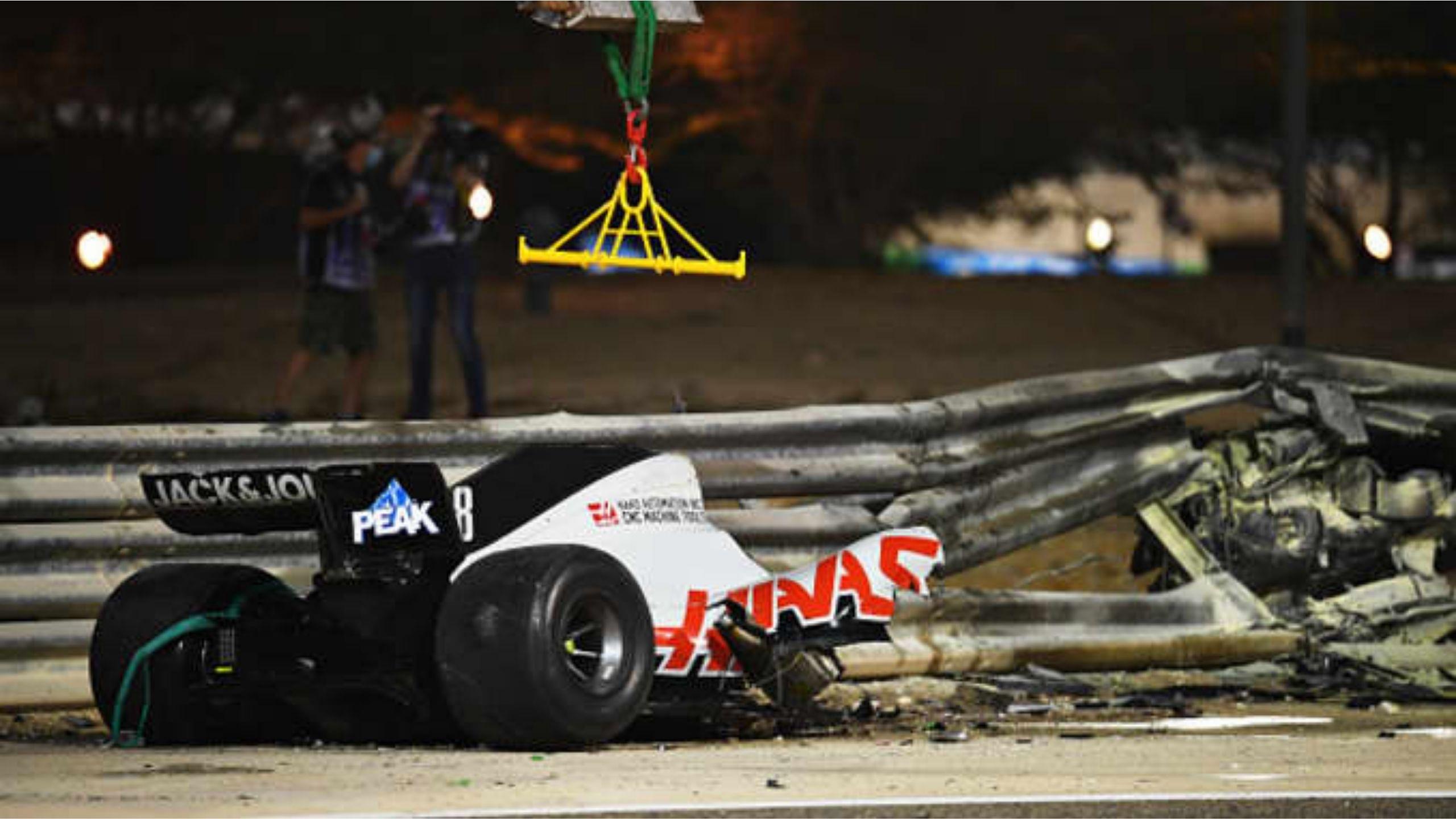FIA had a list of protective clothing tests for their new standard introduced for 2020, which helped Romain Grosjean prevent fatal bruises.
After Romain Grosjean barely survived the crash and subsequent fire at Bahrain, the focus is firmly on safety standards in place. The halo, a technological genius, and the medical cars played a crucial role in the Frenchman coming out relatively unscathed.
But, apart from that, there are a number of tests the driver’s clothing go through, conducted by the FIA before approval. We have put them down below, explaining it in simple terms for your understanding.
Interesting fact I learnt from someone at the @fia last night :
They introduced a new race suit this year which is heavier but protects the driver from fire for 20 seconds, whereas the gloves still only do 10 seconds, like the previous suits. Another lucky break for @RGrosjean pic.twitter.com/6UvVolN3rs
— Karun Chandhok (@karunchandhok) November 30, 2020
FIA’s protective clothing tests
Flame Resistance : The clothing material is subjected to a direct flame for a prescribed amount of time.
Heat Transmission : The clothing material must withstand a direct flame for a minimum of 12 seconds, while the underwear, socks, and balaclava must withstand a minimum of five seconds, the shoes 11 seconds, and gloves 10 seconds with exception of the palm which must withstand eight seconds.
Heat Transmission for Undergarments : The clothing material is tested to see how it performs when fixed on a surface and stretched, then subjected to heat.
Thread Flame Resistance : A test to see the resistance of sewing thread on exposure to a flame.
Tensile Strength of Structural Seams : Strength of seams tested under a tensile-testing machine.
Tensile Strength of Shoulder Handles : Strength of shoulder handles tested under tension, which is increased gradually until rupture.
Dimensional Change. : The material tested to see the dimensional change when subjected to washing and drying procedures.
Convective Heat Resistance : Convective heat resistance properties of non-textile materials tested with a temperature of 260 degree.
Glove Fingers : Flame-resistance of the seam of the fingers of the glove is tested.







